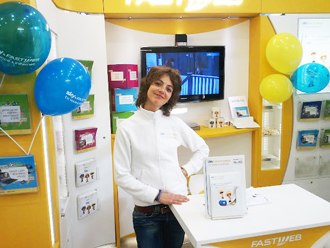Retailtainment: what it is and its importance in Retail Marketing
 Retail is, by definition, the economic sector closest to the consumer.
Retail is, by definition, the economic sector closest to the consumer.
While online communication is educating a new generation of consumers who are more informed and eager to communicate with the brand, on the other hand, new needs also seem to come from retail marketing: it seems that, in the near future, in fact, the store that does not stimulate the customer will remain a sadly empty store.
The customer, in fact, wants to be amazed: today theor shopping is above all “fun” to be practiced both alone and as a social moment of sharing, and the spread of entertainment services within the places of purchase is one of the phenomena that has assumed greater visibility, with the definition of Retailtainment. It represents the answer to the affirmation of the question of “emotional experience” as a determining component in the motivation of purchase.
The value of exchange (symbolic, relational) therefore seems to surpass the value of functional use, pushing the commercial offer to be enriched with broader contents that increase the perceived value of the product.
The use of entertainment solutions (“retailtainment” as animation inside the point of sale) constitutes a surplus both on the perception of the product and for the opportunities of differentiation in a retail context, where many similar, competing and very often indifferent products are present at the same time.
The offer of “hedonistic” services, therefore, seems to increase the relational capacity of the point of sale, increasing the corporate identity of the brand and giving it a strong distinctive character.
The process of integrating the commercial offer (retail) with additional activities aimed at satisfying recreational and entertainment needs, and therefore retailtainment, is widely applied in the shopping centre formula, whose coffer configuration seems to be moving towards a hybridization between sales and leisure spaces.
 And if we’re talking about entertainment, we can’t help but mention the entertainment industry par excellence, the Disney as a winning example: as Disney representative Shawn Turner said: “It’s about proposing an experience that goes beyond buying the toy. We want our customers to be able to enjoy the Disney experience to the fullest. They don’t necessarily need to go to the park to get this experience, you can also get it at the local mall.
And if we’re talking about entertainment, we can’t help but mention the entertainment industry par excellence, the Disney as a winning example: as Disney representative Shawn Turner said: “It’s about proposing an experience that goes beyond buying the toy. We want our customers to be able to enjoy the Disney experience to the fullest. They don’t necessarily need to go to the park to get this experience, you can also get it at the local mall.
Richard Bates, creative director at the branding agency “The Brand Union”, remains of the same opinion: “This is not surprising. Disney shops are like museums with souvenir shops on the way out, but without the museum experience.”
Bates said the challenge is to balance active brand interaction experiences with more passive product buying experiences. “We need to make sure that the activities strengthen the brand’s core message, and not only improve the store experience. “We need to build a brand experience that, while sufficient in itself, amplifies the experience itself even after leaving the store. ”
One of the most important companies for marketing investments, the Apple, obviously also provides  a successful case history of retailtainment: the Apple Stores, in fact, work not only for the experiential aspects, but also because they offer the user the possibility to use the goods before buying them.
a successful case history of retailtainment: the Apple Stores, in fact, work not only for the experiential aspects, but also because they offer the user the possibility to use the goods before buying them.
They therefore combine the shopping opportunity with the opportunity to use the product, which itself becomes entertainment: and the success of this formula is demonstrated by the fact that they manage to bill the ROI per square meter higher than any retail chain.
Retailtainment could also be the answer to the competition of “e-commerce”: if in front of a screen the user will be “entertained” through the two senses (sight and hearing) only in the experience in store you can live an experience that involves all five senses.


